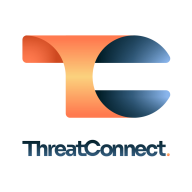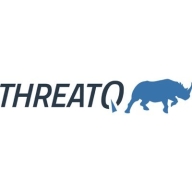

ThreatConnect Threat Intelligence Platform (TIP) and ThreatQ are two leading tools in the threat intelligence space, each with its own strengths. ThreatQ appears to have an upper hand due to its deeper feature set and extensive customization options, despite its higher cost.
What features are offered by ThreatConnect Threat Intelligence Platform (TIP) in comparison to ThreatQ?ThreatConnect offers robust automation, comprehensive integrations, and scalable architecture. ThreatQ provides flexible data management, powerful analytics, and extensive customization options. While ThreatConnect focuses on automation and integrations, ThreatQ shines in data management and feature richness.
What areas of improvement can be found in ThreatConnect Threat Intelligence Platform (TIP) in comparison to ThreatQ?ThreatConnect needs enhanced reporting capabilities, better user training resources, and minor refinements in its current integrations. ThreatQ requires better back-end stability, a more intuitive interface for new users, and performance improvements for more seamless user interactions.
How is the ease of deployment and customer service of ThreatConnect Threat Intelligence Platform (TIP) in comparison to ThreatQ?ThreatConnect has a straightforward deployment process, detailed documentation, and responsive support. ThreatQ's deployment is more complex but offers extensive customization options and robust customer support. ThreatConnect ensures a smoother initial setup, while ThreatQ balances complexity with excellent support.
What setup costs and ROI can be seen with ThreatConnect Threat Intelligence Platform (TIP) in comparison to ThreatQ?ThreatConnect offers reasonable setup costs and a good ROI for organizations with significant automation needs. ThreatQ, while more expensive, offers a strong ROI due to its extensive features and deep customization, making it suitable for businesses with complex requirements.
| Product | Market Share (%) |
|---|---|
| ThreatConnect Threat Intelligence Platform (TIP) | 5.1% |
| ThreatQ | 2.4% |
| Other | 92.5% |

| Company Size | Count |
|---|---|
| Small Business | 5 |
| Midsize Enterprise | 23 |
| Large Enterprise | 4 |
ThreatConnect Threat Intelligence Platform provides a comprehensive solution for operational threat intelligence. It effectively ingests and enriches data, aligning with intelligence requirements for seamless application across security operations.
ThreatConnect TIP stands out by integrating threat intelligence with orchestration for streamlined threat management. It simplifies the user experience with a customizable interface assisting security teams in operationalizing insights across multiple teams without disruption. The platform automates threat scoring and optimizes threat correlation and response, ensuring timely threat detection and protection. Collaboration with Polarity and Risk Quantifier accelerates actionable intelligence, while support and patch management enhance overall user experience. Although improvements in integration processes and training accessibility are necessary, the platform aggregates threat data for efficient threat mitigation.
What are the key features of ThreatConnect TIP?In industries focusing on security, ThreatConnect TIP supports teams in identifying and mitigating security threats through automation. Integrated with cybersecurity networks, it assists in endpoint protection, SOC management, and vulnerability management, being pivotal in threat investigation and intelligence dissemination.
ThreatQ is a cybersecurity platform designed to enhance threat intelligence operations. It centralizes and manages threat data, allowing organizations to identify and respond to threats more efficiently.
ThreatQ is designed to empower security teams by personalizing threat intelligence and automation processes. It integrates with existing technologies, streamlining data collection and distribution. This promotes efficient detection, investigation, and response to security incidents, improving overall cybersecurity posture and resilience.
What are the key features of ThreatQ?ThreatQ is versatile in industries like finance and healthcare, where cybersecurity is crucial. It facilitates swift threat identification and risk management, essential for protecting sensitive data and complying with industry regulations. Its adaptability allows it to fit into diverse security architectures, making it a valuable asset across sectors.
We monitor all Threat Intelligence Platforms (TIP) reviews to prevent fraudulent reviews and keep review quality high. We do not post reviews by company employees or direct competitors. We validate each review for authenticity via cross-reference with LinkedIn, and personal follow-up with the reviewer when necessary.